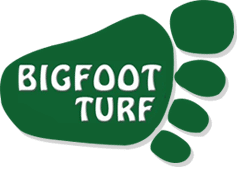Thatch. It’s a dreaded word for anyone who wants their lawn to look its best. But is it really the scourge of lawns it’s made out to be? Not necessarily: It’s an essential part of a healthy lawn, and contributes to turf health. Knowing when it crosses the line from being beneficial to problematic is critical when determining if it’s time for thatch removal.
Thatch often gets a bad – and undeserved – rap. It’s an important part of any turf’s health. Made of decomposing organic matter – dying grass, mostly – it fights evaporation and helps your lawn stay hydrated, insulates your grass from Colorado’s rapid temperature fluctuations and offers a cushion that makes grass resist wear and tear from foot traffic.
So long as your thatch layer is less than 3/4 of an inch thick, your lawn’s better for it. Deeper thatch layers impede growth by keeping water from reaching turf’s roots, and preventing turf’s roots from reaching the nutrients in soil. Gauge thatch depth by cutting a sliver from your lawn. If it’s deeper than a half or three-quarters of an inch, it’s time for thatch removal.
If it’s spring time, you can dethatch at the same time you aerate your lawn. If it’s later in the summer or fall and you notice your thatch is too thick, you have two options: Tackle it by hand with a convex rake, a rake built to comb out the deep layers in your turf, or rent a power dethatcher. Thatching blades on lawn mowers aren’t usually effective at pulling thatch from turf, and may damage your lawn more than they help it.
If you’re using the right tools and removing dead material evenly from your lawn, thatch removal is more about timing it – tackling the chore when there’s enough thatch to warrant removal.
